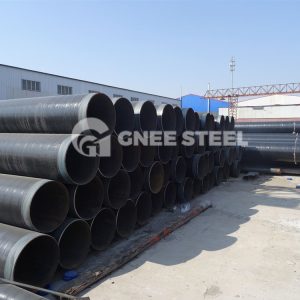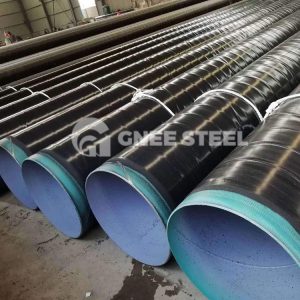Petroleum asphalt anti-corrosion layer is the oldest anti-corrosion layer and is used well in most dry areas. With the development of technology, epoxy coal pitch, zinc-rich coatings, etc. have replaced petroleum asphalt as anti-corrosion coatings for steel water pipelines. Due to their excellent anti-corrosion properties and low prices, epoxy coal pitch series coatings have always been the preferred choice for steel water pipelines. Anti-corrosion coating for pipes.

The epoxy coal pitch anti-corrosion layer is generally suitable for the transmission medium temperature not exceeding 110°C. In order to adapt to the requirements of different corrosive environments for the anti-corrosion layer, it is divided into three grades: ordinary grade, reinforced grade and special reinforced grade. The structure of the ordinary grade is one primer and three topcoats, with a dry film thickness ≥0.3mm; the reinforced grade has a structure of primer→topcoat→topcoat, glass cloth, topcoat→topcoat, and the dry film thickness is ≥0.4mm; special The structure of the reinforced grade is primer→topcoat→topcoat, glass cloth, topcoat→topcoat, glass cloth, topcoat→topcoat. The dry film thickness is ≥0.6mm. Topcoat, glass cloth, and topcoat should be applied continuously. pay. In actual projects, grade selection should be made based on engineering conditions, transportation media, etc.

During the construction of the anti-corrosion layer, the ambient temperature should be higher than 5℃ and the air humidity should be lower than 80%. The diluent ratio is 5%, the glass cloth edge is 20~25mm, and the cloth head overlap length is 100~150mm. Anti-corrosion layer voltage inspection: ordinary level 2000V; reinforced level 2500V; special reinforced level 3000V. Anti-corrosion layer inspection: ≯5 leakage points every 10km, measured with a low-voltage audio signal leak detector.